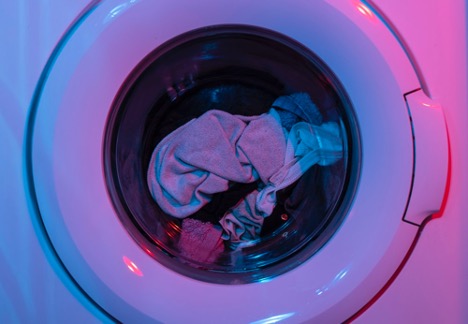Laundry Services does not come to mind first when we think of infection control and while sometimes overlooked, this department will still keep a facility out of compliance on a survey and is a very important component in keeping our residents and staff healthy.
Laundry Services is one of the lesser-known aspects of infection control, but important none the less. Here are a few quick tips on the topic of Laundry Services to reduce the risk of spreading infections in your facility.
Sometimes this is as simple as making sure there is a clear distinction between your soiled linen and clean linen areas. The best practice is separate rooms with the doors clearly labeled.
What about PPE? Too often I see a gown hung up and reused by the laundry attendant when sorting soiled linen. This is increasing the risk of them contaminating themselves with any potential virus or bacteria that could be on the linen. Best practice is the laundry attendant having access to PPE including not only the gown, but gloves, and eyewear. The laundry attendant needs easy access to hand hygiene near the soiled sorting area.
Moving to the clean linen area, the first thing I check is the temperature of the washing machine water, making sure it hits 160° to effectively kill microorganisms. Check with your maintenance supervisor or vendor to determine how hot the temperature gets in your device. While in this area it is a good idea to identify if your vendor comes out on a scheduled basis checking your chemical dispensers. For example, are they coming out every month?
One more important thing to check is if you are properly laundering anything that is microfiber, like towels or mops. While they are more effective in cleaning because they pick up microorganisms, it is very important to follow the IFU (Instructions for use) when laundering them to do so properly. If not done so, they can actually keep and contain microorganisms on them, so please pay attention to the laundering of these items specifically.
The full CDC Infection Control Laundry section can be found here, but here some important specifics:
- A temperature of at least 160°F (71°C) for a minimum of 25 minutes is commonly recommended for hot water washing. Water of this temperature can be provided by steam jet or separate booster heater.
- The use of chlorine bleach assures an extra margin of safety.
- A total available chlorine residual of 50–150 ppm is usually achieved during the bleach cycle. Chlorine bleach becomes activated at water temperatures of 135°F–145°F (57.2°C–62.7°C).
- The last of the series of rinse cycles is the addition of a mild acid (i.e., sour) to neutralize any alkalinity in the water supply, soap, or detergent. The rapid shift in pH from approximately 12 to 5 is an effective means to inactivate some microorganisms.
- Dryer temperatures and cycle times are dictated by the materials in the fabrics. Man-made fibers (i.e., polyester and polyester blends) require shorter times and lower temperatures.
- Regardless of whether hot or cold water is used for washing, the temperatures reached in drying and especially during ironing provide additional significant microbiocidal action. Dryer temperatures and cycle times are dictated by the materials in the fabrics. Man-made fibers (i.e., polyester and polyester blends) require shorter times and lower temperatures.
Our infection control chain is only as strong as our weakest link, so keeping sometimes overlooked areas in top shape is just as important to keeping our chain strong. Thank you to all our healthcare worker superheroes out there. Be safe and be well.

